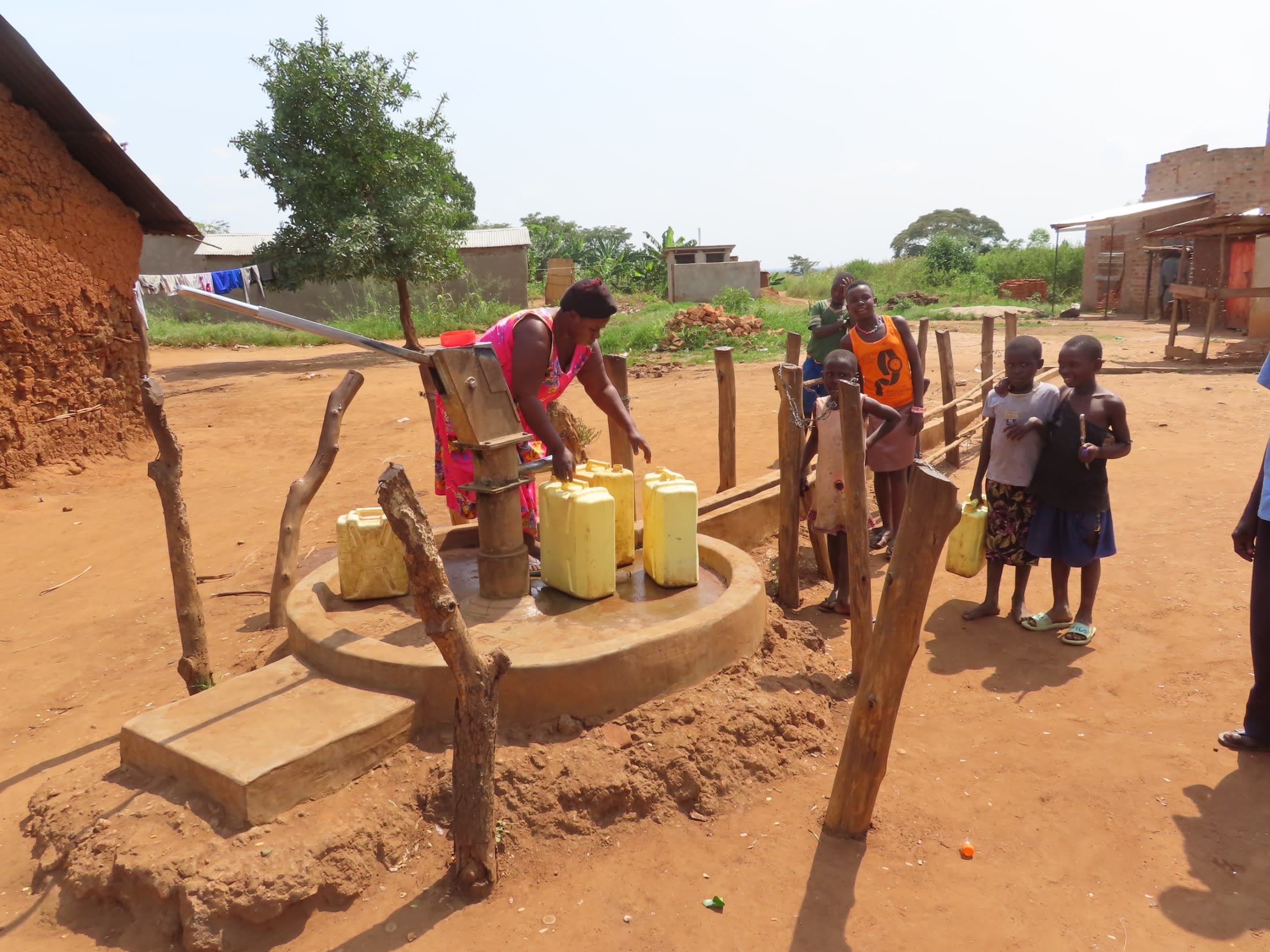In Kihagani, a village of over 350 people, residents wake up very early in an attempt to be the first to collect water due to overcrowding at their waterpoint. But first, to reach the well, they must trek nearly a mile to Kihagani Trading Centre, where the only borehole in the village is located.
Scovia Atuhairwe, 38, seen below collecting water, is married with seven children, which means she needs a significant amount of water in a day to meet her family's needs. She described the water situation as a serious crisis for people in the village. "The village has only one water point serving a total of 460 households. The water point is pumped from the morning at 6:00 a.m. up to night[time] at 9:00 p.m. This makes the water point have frequent breakdowns."

Scovia described how the lack of sufficient water impacts families in the community regarding their daily hygiene. "This has made homes use water sparingly, some bathing only once a day. Washing clothes [has] become a very big challenge, since getting water is a serious scuffle, especially during [the] dry season. The water point is always crowded with a very long queue."
Patience M., nine, shown collecting water for her family below, shared her struggles with us. She said, "Besides long queues at the water point, I walk a very long distance, making me tired and spend a lot of time on the way and at the water point. It is a very big problem to get water in our village."

She continued, "There is always a lot of crowding, long lines, and there is always pushing of each other and fighting for water, especially in the evening. This makes it hard for children to get water during [the] evening hours, and this makes me go back home at night."
The proposed well will significantly reduce the issues of traveling long distances and wasting valuable time in queues. The people in the community, particularly women and children, who carry the brunt of the responsibility for collecting water, will be able to concentrate on other activities like farming and schooling to improve their economic situation.
Here's what we're going to do about it:
New Borehole
This new borehole is an exciting opportunity for this community! We work with the community to determine the best possible sites for this well.
We conducted a hydrogeological survey and the results indicated the water table is an ideal candidate for a borehole well. Due to a borehole well's unique ability to tap into a safe, year-round water column, it will be poised to serve all of the water needs for this community, even through the dry months.
Community members will help collect the needed construction materials such as sand, rocks, and water for mixing cement. They will also provide housing and meals for the work team, in addition to providing local laborers. We will complement their materials by providing an expert team of artisans and drilling professionals, tools, hardware, and the hand-pump. Once finished, water from the well will then be used by community members for drinking, handwashing, cooking, cleaning, and much more.
Training
Training's main objectives are the use of latrines and observing proper hygiene practices since these goals are inherently connected to the provision of clean water. Open defecation, water storage in unclean containers and the absence of hand-washing are all possible contaminants of a household water supply. Each participating village must achieve Open Defecation Free status (defined by one latrine per household) prior to the pump installation for this borehole well.
This social program includes the assignment of one Community Development Officer (CDO) to each village. The CDO encourages each household to build an ideal homestead that includes: a latrine, a handwashing facility, a separate structure for animals, a rubbish pit and a drying rack for dishes.
We also implement the Community-Led Total Sanitation (CLTS) approach with each of our village partners. This aims to improve the sanitation and hygiene practices and behaviors of a village. During these sessions, village leaders naturally emerge and push the community to realize that the current practices of individual households – particularly the practice of open defecation – are not only unhealthy, but affect the entire village. CLTS facilitates a process in which community members realize the negative consequences of their current water, sanitation and hygiene behaviors and are inspired to take action. Group interactions are frequent motivators for individual households to build latrines, use them, and demand that other households do the same.
Improved Sanitation
The aim is that all households own an improved latrine. Many households do not use a latrine but use the bush. Due to open defecation, feces are spread all over the village. This leads to waterborne diseases and contamination of groundwater and surface water. Our aim is that the community is able to live a healthy life free of preventable diseases. We endeavor that at the end of our presence in the community, people will have both access to sustainable, clean water and access to sanitation. We have now organized families to form digging groups for latrine construction, and empowered them with tools to use.

 Borehole Well and Hand Pump
Borehole Well and Hand Pump
 Rehabilitation Project
Rehabilitation Project












